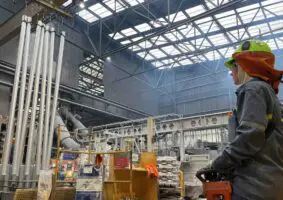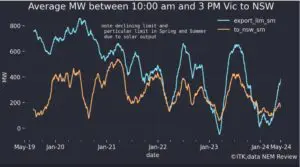
The release of the new scheme regulations saw the debate over the future of VEEC supply take an unexpected turn in October, with a major impact on the VEEC price the result.
Residential lighting activity is now firmly back in focus, though questions remain as to precisely how the new methodology will operate. Meanwhile the state election is now only weeks away.
The primary focus across most of the last 16 months in the VEEC market has been the prospect of changes to the commercial lighting methodology, which for recent years has dominated VEEC supply.
Having become apparent that the Department of Environment, Land, Water and Planning was aiming to reduce the number of VEECs received per install and with activity to date having focused so much on high bay installations to have diminished the remaining pool of potential installs, the question became which technology would fill the void.
For most, the expectation was that activity in the relatively untapped office lighting sector would be the primary candidate. And, the conventional wisdom ran, to ensure VEECs would continue to be created in volume, the economics of the office sector would require the VEEC price to move from the low to mid $20s to somewhere north of $25 to make this work.
While scheme participants debated the merits of this argument across the year, the Department was working on another change that would ultimately make a far greater impact on the VEEC price. Having not featured in the original consultation document covering the renewal of the regulations, the replacement of CFL lighting with LED technology was a side issue being considered by decision makers.
Speculation began to mount over whether such replacements would be included, along with when and with how great a subsidy. In October, the release of the new scheme regulations saw the CFL to LED methodology included and to a more generous degree than most expected.

The impact on the VEEC price was immediate. The market had already lost ground across August and September, moving from the low $20s to the high teens on concerns that VEEC supply had not fallen and that the looming election could yield a Coalition government intent on bringing the scheme to a premature close.
Having recovered to sit above the $20 mark, the spot market began October by softening and, following the release of the new regulations days later, the market fell rapidly to the high $16s before subsequently recovering to hover in the low $17s for most of the month.
Yet the changes are not without contention. Firstly, CFL replacements are only set to commence from December once the new regulations kick in and there are as yet no lights approved under the scheme which meet the relatively high lumen per watt requirements outlined explicitly in the new regulations.
Further, there is a growing push for the scheme regulator (the Essential Services Commission) to introduce some rigorous restrictions to these installations; top of the list being a change that was introduced after the explosion of VEEC creation from residential downlight installations, which mandated that a qualified electrician undertake the install, thus radically altering the economics of the activity after the fact.
Late in the month the ESC confirmed in writing that it had assigned a team to look at the risks associated with this methodology and warned participants to expect some additional compliance requirements.
Exactly what these additional measures are is unknown and appears set to remain that way until 26thNov19, the Monday following the state election. Should a light touch be adopted, there are those that believe that should a tidal wave of activity result in the short to medium term, further changes may be put in place by the regulator to tighten the reigns.
In the even this occurs, the cost of undertaking the activity will increase, in some cases by many dollars and there are those who believe that the current pricing levels do not reflect the additional costs that are likely to be incurred should changes be made.
Against the more invasive measures such as the requirement for qualified electricians to undertake the activities, is the argument that the replacement of a CFL with an LED is a far simpler undertaking than the upgrading of downlight technology, diminishing arguments about safety risks.
Whichever side of the fence you may sit on, there is either an expectation that the VEEC scheme is about to see a dramatic reorientation back toward residential activity after 3 years of commercial dominance.
Perhaps indicating just how important the other recent news has been, one could be forgiven for having over looked the looming state election. The incumbent Andrews Labor government remains the front runner and, should it win, would all but guarantee the scheme’s continuation through to 2025 with new targets to be set next year. Yet politics has always been an unpredictable game and perhaps never more so than in recent times.
While the Guy opposition has not yet formally announced its opposition to the scheme, most believe it harbours intentions of discontinuing it beyond the current target period out to 2020, a move which would be devastating to the VEEC price.
New South Wales Energy Savings Certificates (ESCs)

While not devoid of some price volatility, the ESC market during 2018 has traded consistently within a $22-$25 range. In October however, that changed and in fairly dramatic circumstances. It appears the explanation for this change lies partly in events that occurred in 2017 as well as in some more recent developments.
With the ESC surplus ballooning by the week, the spot ESC price reached a low of $11.80 in July 2017, with many in the industry preparing to shut up shop.
Yet rumours that the Department of Environment and Heritage was considering winding back the subsidy to the scheme’s largest source of supply (commercial lighting), along with a sharp decline in actual ESC supply across the July to November period saw the market recover steadily to surpass the $22.00 mark in the back end of the year.
Fast forward to the middle of 2018 and the concerns that may have existed in late 2017 that the underlying rate of ESC registration had declined sharply had been eclipsed by 8 months of strong creation. Yet the looming changes to the commercial lighting methodology still led many to believe a reduction in supply was yet to come.
Yet even this sentiment was eventually overcome. On the one had it was the numerous changes made by the Department to water down the impact of the commercial lighting changes, such as the carving out of regional areas from the reduction or the eventual clarification that warehouses used for wholesaling would be considered as ‘industrial’ and thus instead of being subject to reductions in the number of ESCs per install, would actually see an increase.
Yet it was also almost certainly to do with the prospects for ESC supply from the Home Energy Efficiency Retrofit methodology, following changes to the definition of the small business eligibility threshold. The changes will significantly increase the pool of eligible premises that can receive upgrades by paying a flat $30 fee rather than the $5 minimum co-payment per MWh saved.

Thus, via a handful of administrative changes the outlook has changed for future ESC market supply and as a result the spot price has softened. Having opened October in the mid $22s, the spot market softened progressively to close the month below $19, a level not seen since September 2017.
At the time of writing there were 6.7m ESCs available for surrender against the 2018 target which is expected to be in the 4.2-4.4m range. Hence the market is already over half way toward meeting the 2019 target, with close to 6 months of 2018 generation still to go.
Yet the reality of the growing surplus was not previously enough to bring the market down because of the expectation that future supply would be lower. If in fact there is no reduction in supply set to come, it may be a painful year ahead for ESC creators.
Marco Stellais Senior Broker, Environmental Markets at TFS Green Australia. The TFS Green Australia team provides project and transactional environmental market brokerage and data services, across all domestic and international renewable energy, energy efficiency and carbon markets.










